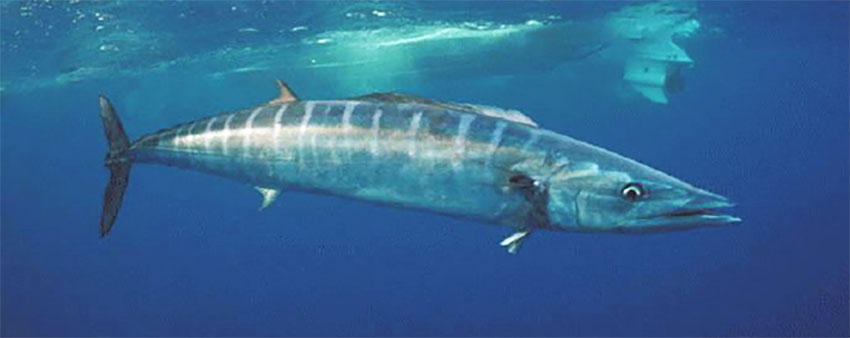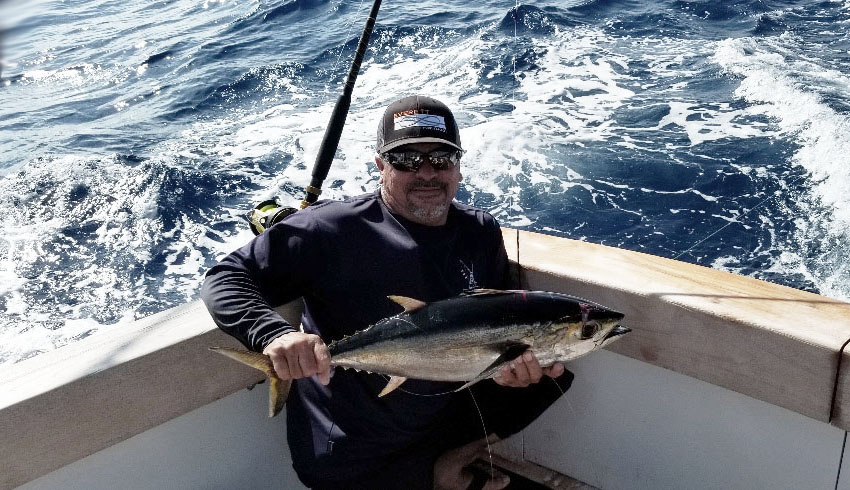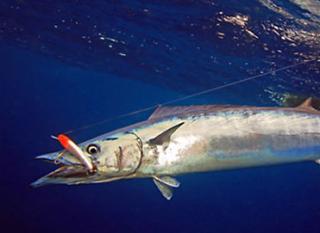Wahoo fishing can be challenging as anyone who has tried it knows. However, it can also be very rewarding! Wahoo fishing aficionados rave about catching the elusive wahoo. Super vision, amazing swiftness and razor-sharp teeth make the wahoo one of the ocean’s fiercest predators. Wa-HOO!” is a descriptive name with dual meaning. It is the name given to the fish species that represents the rough and tumble encounters they are famous for as well as the rush of blistering speed experienced once you get one on the line.

“
Beyond question, the best part of wahoo fishing is hearing that reel scream,” according to Ryan Grotta, owner of G-Fly Lures in Boca Raton, Florida.
Captain George McElveen, owner of Reel McCoy, out of Bud N’ Mary’s Marina in Islamorada, Florida observes, “
There’s not much else that can pull line off the reel like a big wahoo!.

Note: Built to take on the challenge of hard hitting fish like tarpon and wahoo, the L&H Boats’ Walkaround has all the right stuff.
Fishing for wahoo requires a combination of several factors: skill, patience, and hoping everything, from the tides and current, to the bait, and most importantly, your tackle comes together. There are many things you can’t control offshore, but the one thing you certainly have control over is the tackle you’re using. Make sure you have all of the essentials. Spend the time making sure your hooks are very sharp and your line is fresh. Be prepared for battle. Sometimes wahoo will only feed for a short period of time and you want to be ready when the “fight” is hot.
Some techniques for targeting wahoo here in South Florida are high speed trolling with leads. A favorite way of anglers to target wahoo is by using a number 6 and number 8 planer attached with 50 feet of 50 pound monofilament to 20 feet of 50 pound fluorocarbon to number 7 wire with double 7/0 Mustad hooks. Bonita strips, split tail mullet, ballyhoo or spoons are great baits. Many anglers prefer to use land lures to cover up their tackle along with a fresh bonita strip which can be purchased from a local tackle shop. You can also buy pre rigged shock leaders on yoyos made for the planer. Colors can be very important, depending on the time of day, the clarity of the water and most importantly the type of baitfish in the water. Dark colors, such as purple, black and red, and black when the water is clean and the sky is clear are great choices. When the moon is full and the water is dirty you can switch it up and use pink and blue or white, especially. It’s very important to have confidence in your baits, continue to check your baits and make sure they are fishing properly and tracking through the water the way you like them to.
A great area to find feeding fish are inlets which have a constant flow of water especially during the first few hours of daylight. The best times to target wahoo are the first few hours and the last few hours of the incoming or outgoing tides, especially during the new and full moons. Pay attention to which way the current is going will help determine how fast you can troll. Wahoo like to feed In low light conditions and get finicky as the sun comes up, so wake up early and get out before the crowds do.
Remember - have fun while you’re fishing. Keep your tackle in order and your baits fresh, and get ready for some awesome and exciting reel screaming! Pay attention to all the details, including your fish finder and you will be successful. Fish hard from 90 to 400 feet of water. Many anglers prefer depths between 120 to 300 feet. Keep it REEL!


